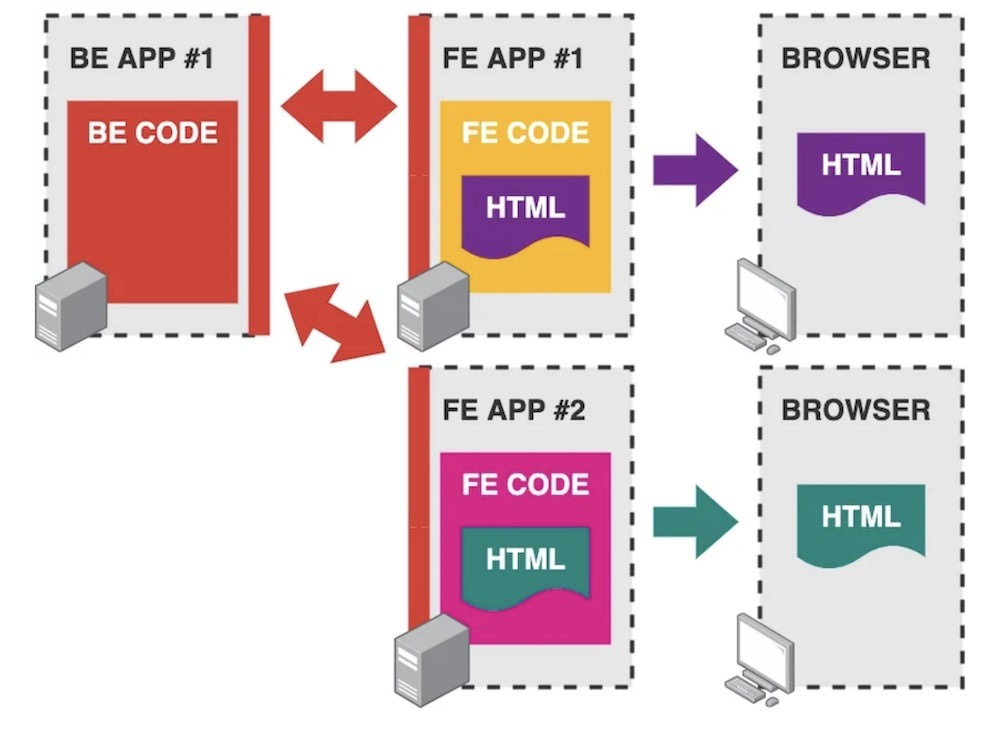The Modern Developer’s Paradigm: How to Merge Design, Development, and Data Science
The software development universe, traditionally steeped in lines of intricate code, is now murmuring with No Code / Low Code (NC/LC). For many seasoned software engineers, this might seem like an oversimplified detour from genuine development.

However, beneath the surface of drag-and-drop interfaces and modular design lies a rich tapestry of technical architecture that is reshaping the way we approach and think about software development.
Let’s peel back the layers of NC/LC platforms and explore their technical underpinnings, offering developers a comprehensive perspective on how these platforms fit into today’s advanced engineering landscape.
Open Standards in Low-Code
Open standards have long been recognized as the cornerstone of scalable, interoperable, and robust software systems. For developers, adhering to these standards is not just about conformity but about ensuring extensibility and compatibility across diverse ecosystems. They seek control, flexibility, and a unified experience throughout the application life cycle. There’s a genuine comfort in leveraging preferred languages, tools, and established workflows.
Modern low-code platforms are rising to this challenge, upholding these open standards while integrating productivity with flexibility. They emphasize building a robust enterprise architecture and offer a unified experience across concept, design, integration, development, and deployment stages.
By employing a modern, best-of-breed, and cloud-native technology stack, these platforms don’t just accelerate the development process but also ensure it’s anchored to technical excellence.

Moreover, the modular approach in these platforms is characterized by the decoupling of frontend and backend components. It separates the user interface (UI) of an application from its underlying logic and data processing. This further facilitates the integration of external innovations, thus promising a harmonized yet adaptable development ecosystem.
Developer Focus Shift: Business Logic vs. Infrastructure
Developers prefer focusing on the core application functionality rather than being tied down by infrastructure and setup nuances. Modern low-code platforms facilitate just that, streamlining integrations and setups to be almost effortless. By using no-code for backend tasks, these platforms offer a quicker route to achieve standard operations.
For instance, a developer might connect an app to various data sources, whether they’re on-premises or in the cloud, with just a few configurations.
However, when it comes to complex scenarios, these platforms don’t hold developers back. They offer provisions like:
- Custom Code Injection: There are often options to embed custom code, ensuring that when the in-built functions aren’t enough, developers can step in with their expertise.
- API Extensibility: These platforms typically support extensive API integrations, allowing developers to interface with third-party systems or create custom endpoints.
- Advanced Logic Workflows: Beyond basic logic, developers can design intricate workflows to match specific business processes or rules.

So, while routine tasks like connecting to an enterprise authentication system become a matter of a few clicks, these more complex scenarios ensure the flexibility and depth that seasoned developers expect.
The Advent of Cloud-Native Development in Low-Code
The integration of cloud-native principles in development traces back to the inherent need for agility, scalability, and responsiveness in the digital age. The rise of these principles is intertwined with the increasing demand for applications built using containers orchestrated by platforms like Kubernetes.
These cloud-native structures, with their containerized setups and orchestration layers, enable engineers to swiftly adapt to business dynamics by scaling computational workloads and launching new features at an accelerated pace.
Yet, amidst this evolution, low-code platforms have emerged, which enable developers to produce cloud-native applications at a pace that’s over ten times quicker, utilizing significantly fewer resources (around 70% less). They offer developers visual tools for assembling reusable components, thus expediting cloud-native development.
More profoundly, they seamlessly align with serverless and microservices architectures. This alignment means that developers can focus intently on business logic while the platform handles the intricacies of cloud infrastructure – from auto-scaling to management.
This relationship between low-code platforms and serverless functionalities empowers organizations to harness the architectural prowess of the cloud, negating complexities and unpredictable licensing hurdles tied to usage. The innovative pairing enables even JavaScript developers, who constitute approximately 64% of the developer community, to tackle novel workloads, from event-driven paradigms to IoT integrations.

Bringing All the Elements Together
Today, a heightened focus is cast on the collaborative elements, particularly in low-code platforms. This emphasis is largely on the design-to-code transitions, bridging the historically fragmented journey from initial design conceptualization to tangible code implementation.
Such a streamlined approach, coined as “DesignOps,” mirrors the integrative philosophy behind DevOps. The aim is clear: enabling designers and developers to coalesce their efforts, ensuring that each pixel in the design is perfectly translated into code.

Simultaneously, there’s a burgeoning interest in the convergence of automated data science tools with traditional development. Platforms today are extending their capabilities, embedding automated data science workbenches that champion AutoML techniques combined with unsupervised learning.
This merger not only amplifies the efficiency of feature engineering and model experimentation but also simplifies the deployment process of matured models. By rendering the automation layers transparent, developers are given an enriched environment where they can both enhance their applications and immerse themselves in the intricacies of data science.
A New Way to Build
In the world of software development, the combination of open standards, cloud-native frameworks, and a strong collaborative spirit is reshaping how we work. Low-code platforms, central to this change, offer a blend of speed and adaptability. Developers should seize these opportunities as we move forward, ensuring a more efficient and innovative application development journey.